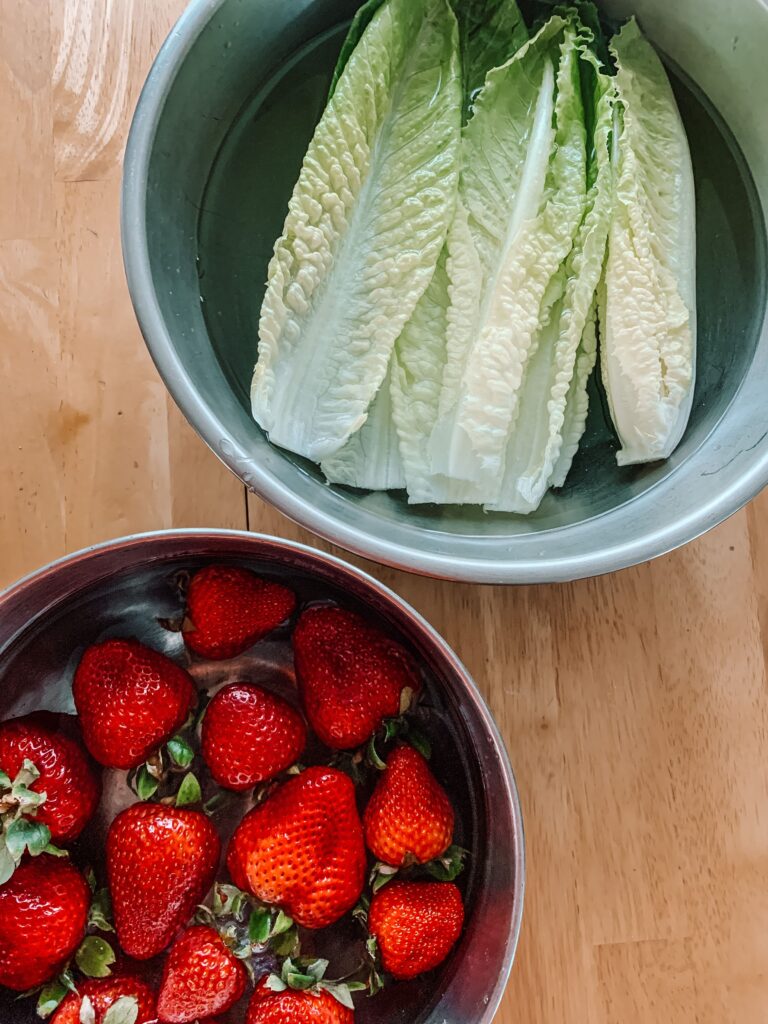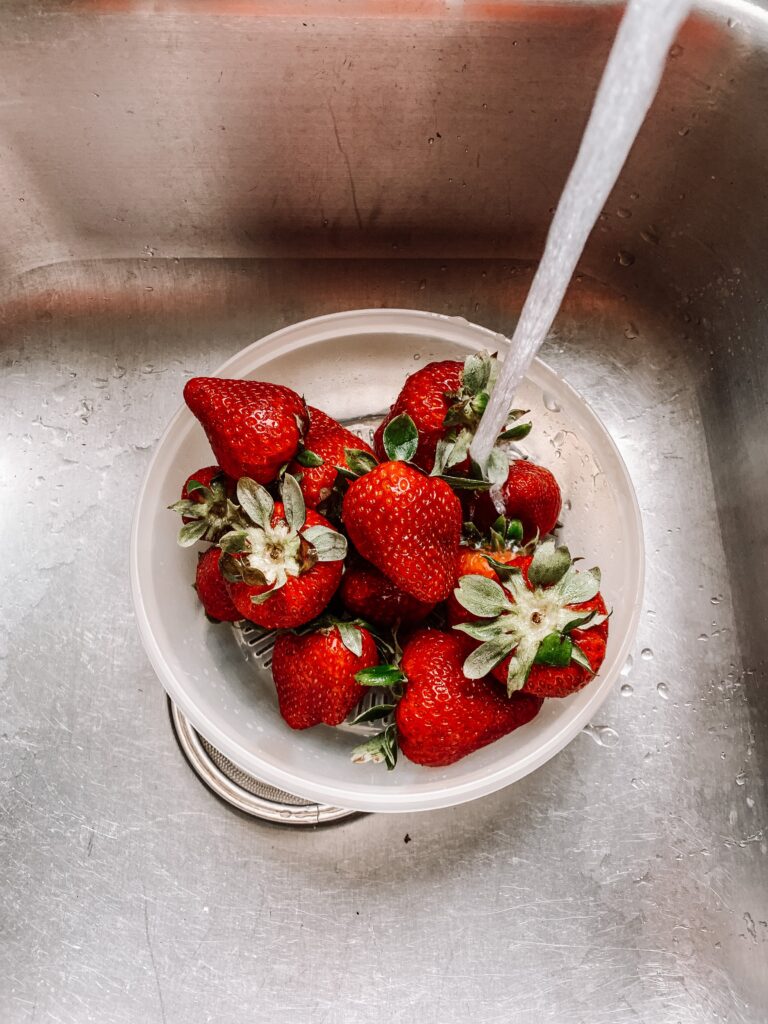HOW TO PROPERLY WASH YOUR FRUITS AND VEGETABLES TO REMOVE PESTICIDES AND KEEP PRODUCE FRESH

I’m a HUGE advocate for eating lots of produce like fruits and vegetables.
Since I was a little girl, I’ve loved fresh fruits and vegetables. I consume them consistently throughout the day.
I love fresh spinach in my smoothies, berries in my coconut yogurt in the morning or crunchy green beans at dinner.
Needless to say, I love love love all produce.
Recently, I’ve been interested in keeping my produce fresher for longer while also removing pesticides and waxes that are found on all fruits and vegetables.
I try to buy organic at times, especially if the fruits or vegetables are a part of the dirty dozen but…
The reality is I’m a young adult and most of the time typically grown (nonorganic) fruits and vegetables are what I buy because they fit in my budget. Anyways…
The “Dirty Dozen” is a list of products farmers typically use the most pesticides on meaning…
You should buy these foods organic whenever possible. Organic fruit and vegetables typically have a reduced level of pesticides used on them, but that doesn’t mean no pesticides are used at all.
There’s also a list of the “Clean Fifteen” which provides a list of produce that are considered cleaner and have the lowest levels of pesticide residue.
The Dirty Dozen For 2020:
- Strawberries
- Spinach
- Kale
- Nectarines
- Apples
- Grapes
- Peaches
- Cherries
- Pears
- Tomatos
- Celery
- Potatoes
- Hot peppers
The Clean Fifteen For 2020:
- Avocado
- Sweet Corn
- Pineapple
- Onion
- Papaya
- Sweet peas- frozen
- Eggplant
- Asparagus
- Cauliflower
- Cantaloupes
- Broccoli
- Mushrooms
- Cabbage
- Honeydew Melon
- Kiwi
The Use of pesticides on produce
Pesticides are used to ward off pests including insects, mosquitoes, ticks, germs, rodents, and weeds.
You can find more information about the use of pesticides, why pesticides are used, and the different kinds of pesticides at the Environmental Protection Agency.
How to Clean Your Fruits and Vegetables
For peace of mind, I like using something “special” to clean my fruits and vegetables while still being clean…
It’s not a commercial produce cleaner but…
Vinegar.
Most people say that using clean, cold water works great at clean produce but using a vinegar wash helps to keep produce fresher for longer.
For that reason, I love using a vinegar and salt soak or spray to clean all my produce to help remove any pesticides, waxes, germs, and help to keep my yummy fruits and veggies fresh.
To clean my fruits and vegetables I fill a large bowl, or my clean sink with cold water, white vinegar, and some salt or baking soda. Typically, I use a 3:1 ratio of water to vinegar. Or three cups of water to one 1 cup of vinegar. You can use less if you feel like it, but I find that this works for me. I then let them sit in the mixture for about 20 minutes.

Alternative produce washing Methods
If you are against soaking your produce, you could also put this mixture in a spray bottle. Let the mixture sit on the produce then rinse with cold water.
For berries or softer fruits I will do these separately and in a smaller bowl with just a small dash of vinegar, because you don’t want them to take on a vinegar flavor or get too mushy. You can also let berries or softer items sit for about 10 minutes in the mixture instead of 20 minutes to prevent the berries from taking on a vinegar flavor.

For vegetables like potatoes, I like to let them soak in the vinegar, water, salt/baking soda mixture. After about 20 minutes, I use a vegetable brush to scrub off any remaining dirt/ grime.
After I remove the fruits and vegetables from the cleaning solution, I rinse them with cold water and let them thoroughly dry before putting them away so they can stay fresh for longer.
I hope you guys found this post helpful!
Comment below if you have any other tips to remove pesticide or keep produce fresh longer.
xo,